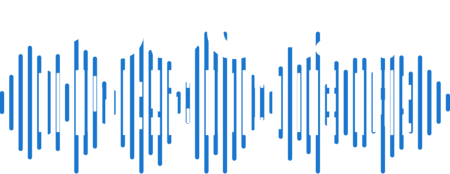As part of my fiduciary duty at RawVoice, I am required to make sure all of our advertising campaigns are reporting and being billed correctly. Having highly accurate reporting is priority number one to me so that we can pay our podcasters on ad deals fairly, but also to ensure our advertisers are billed only what we have delivered.
I love statistics; it was one of my favorite courses in college so I often drive my team members crazy by asking them to calculate a weird stat or explore a new trend. What I aim to do in this series of articles is answer questions you might have on podcasting trends and provide you helpful insights. Feel free to reach out to me via the contact info on the site to send me questions.
Today, I want to talk on two topics: Truth in reporting podcast statistics; and a new statistic we’re calculating for our corporate clients that shows what percentage of a media file is actually streamed and / or downloaded.
I have been managing podcast ad deals since 2005 and have seen the good, bad and the ugly. My sole philosophy when it comes to podcast stats is simple: I don’t care what the number is so long as I know what the true number is.
Truth in Reporting.
A week does not pass without someone contacting me to tell me they have 100,000 listeners per episode and want to work with us on securing advertising. My response to them has always been to get on our stats and we will talk in a couple of weeks. Often, the follow-up discussions are spent explaining to them why their audience size assessment was inaccurate.
The past couple of years we have been involved in the audits of podcasters’ reporting data that has more times than not ended disappointingly for the podcaster. It is not usually negligence on their part, rather their trust in a home-grown tool, or some non-podcast stats system.
Let’s look at the impact of improper reporting. If a podcaster was audited to have delivered 100,000 downloads from a trusted stats system, yet had originally billed for 500,000 from a system they employ, this will significantly, negatively impact the performance of the campaign, not to mention the cash that has to be returned to the media buyer.
The podcaster may be denied a follow-on campaign, whereas they may have extended the campaign had the initial reporting been accurate. These situations cause advertisers as a whole to lose faith in podcast advertising.
What constitutes a trusted stats system? From experience, we know that we have to tweak our stats engine weekly to keep up with all the bots, rouge apps, bad code and the overall deviations on the Web. We also know you need volume to see trends. For instance, we found a recent update of a browser that was causing bloated numbers — without weekly monitoring that would have caused inflated data.
If you have created your own solution, and it does not have the scale/volume and safeguards to see and flag trends such as a single-browser version inflating calculations, over time issues such as this will compound and cause inaccurate numbers reporting, both high and low. Most shows and networks do not have the time, traffic volume or staff resources to track such changes.
Media buyers are already starting to ask hard-hitting questions, and some are implementing or contracting statistics solutions that require podcasters to be on the media buyers’ tracking and stats system. You do not want to be on the wrong side of reporting numbers when an audit puts you in a position that could have a negative financial impact.
If you are a member of a network and they are doing ad deals for you, your reputation could be damaged by improper reporting, so always question the network leadership about how the podcasts statistics are being determined. As important, ask questions of your existing stats provider.
How much of a media file is being streamed / downloaded?
We recently did some research that we revealed at the New Media Expo this past January. We have been studying activity that can be broken into five categories detailing what occurs when a media file is queried. We found the following information that should give you some new insights into media consumption.
To do this, we took a snapshot of a network of podcasts, episodes in this network had billable downloads ranging from 2,000 downloads to 120,000 downloads per episode. We took a one-month sample of every episode / show and averaged out the totals below.
-
55.9 percent of downloads where uncountable (duplicate, repeats, bogus)
-
5.7 percent were unique IP completed downloads
-
.8 percent were repeat completed downloads
-
17.7 percent unique IP partial downloads (2 percent-99 percent)
-
19.9 percent repeated partial downloads (2 percent-99 percent)
Now these numbers may shock you, but take into account that the network ended up having more than 5.60 million billable downloads.
In future posts I will go much deeper and explain details on each of the above data points. What I want to impress upon you today is that unless you have specifically coded a filter for requests that are duplicate, repeats, bogus, etc., it is easy to understand how a show could end up with 55 percent more reported downloads than actually occurred.





